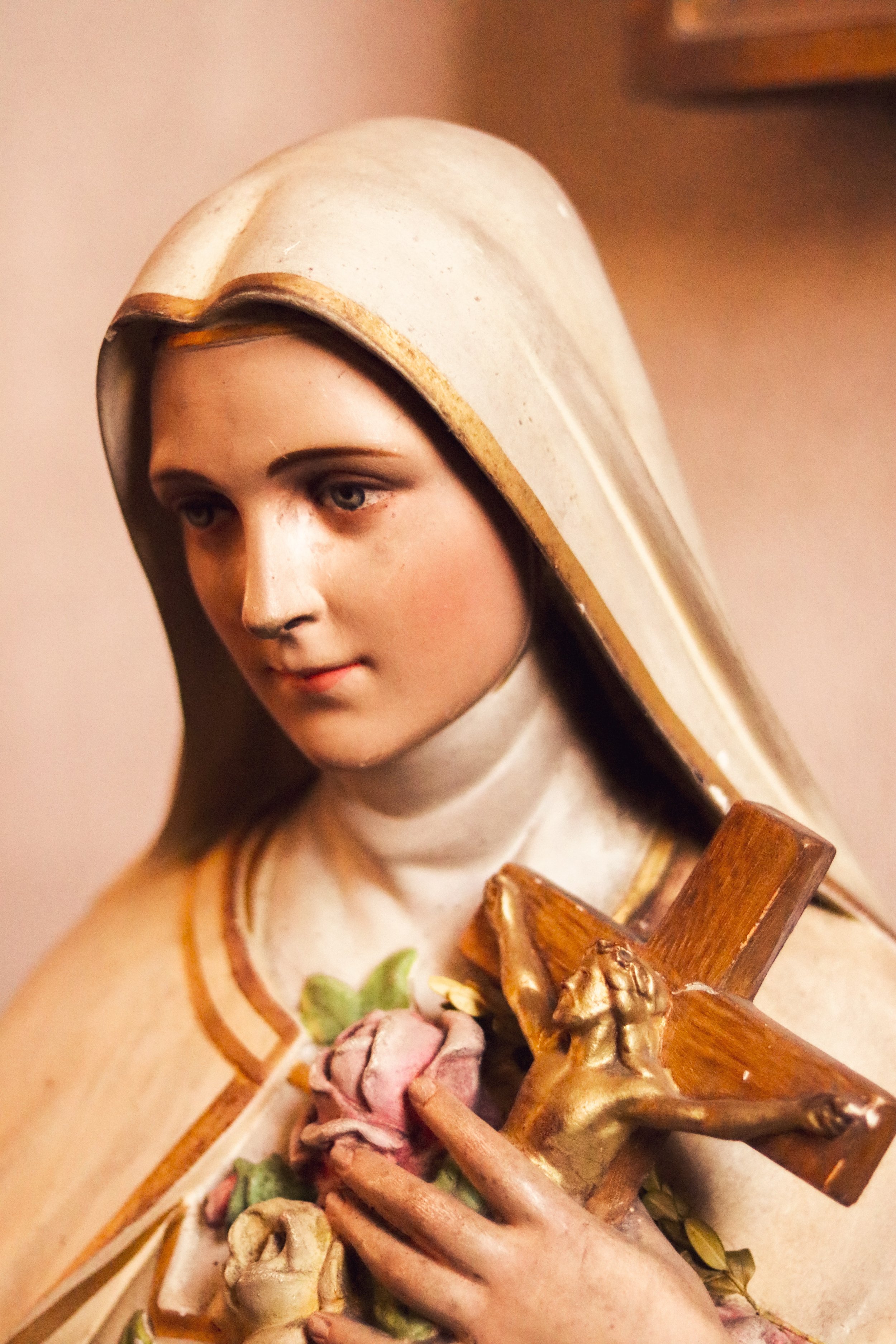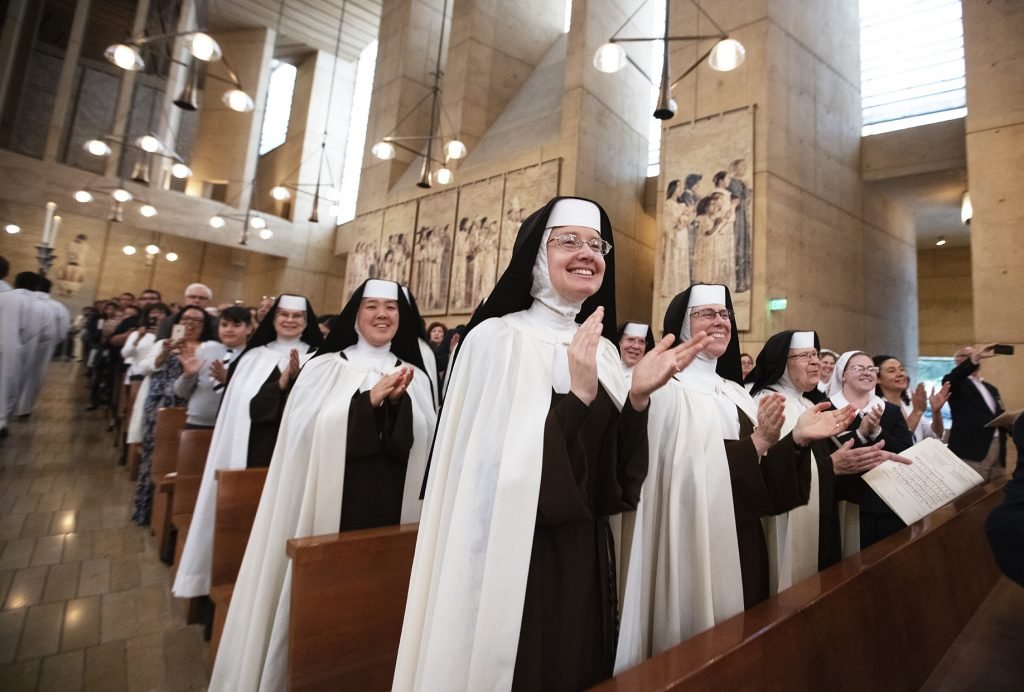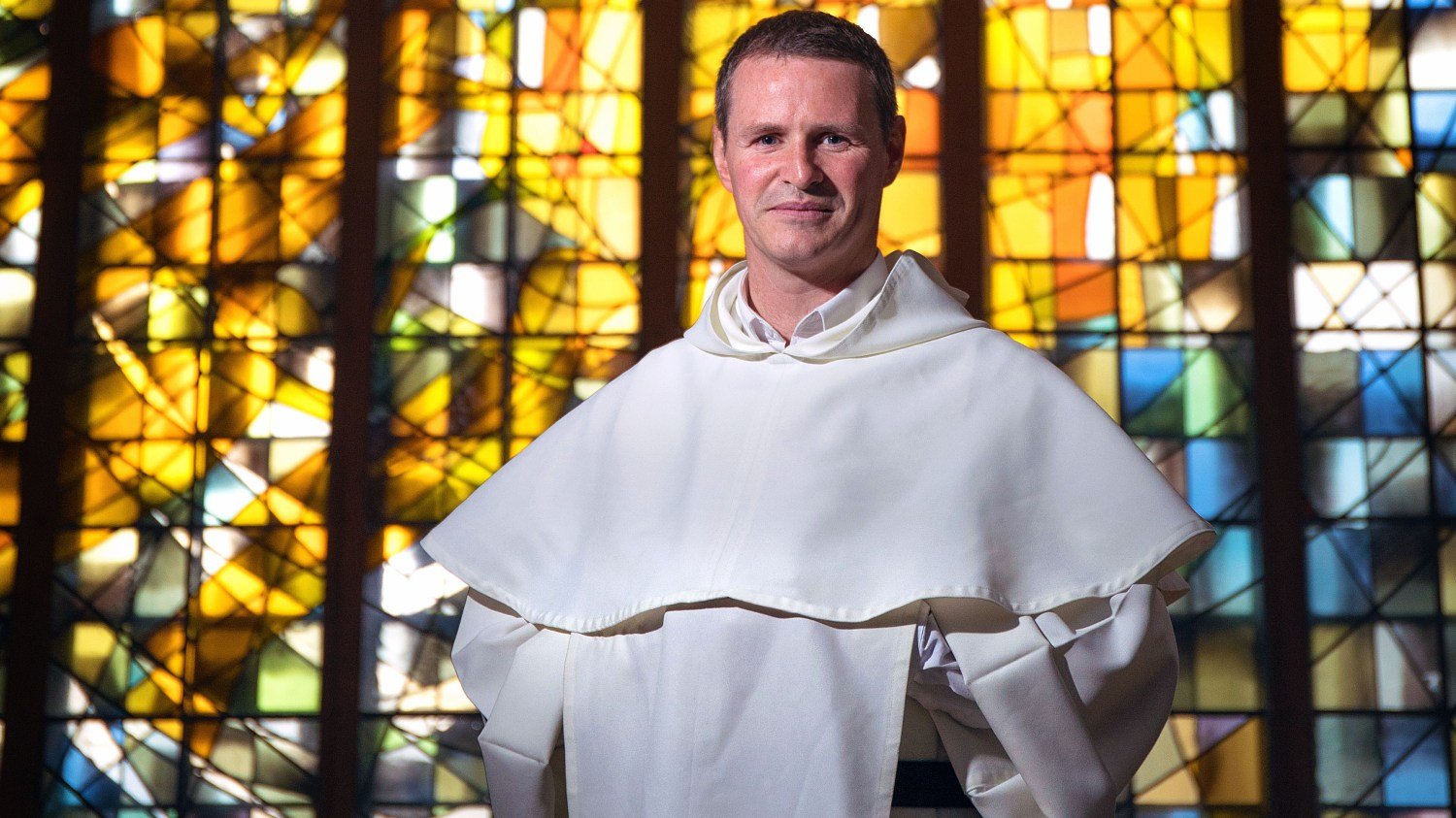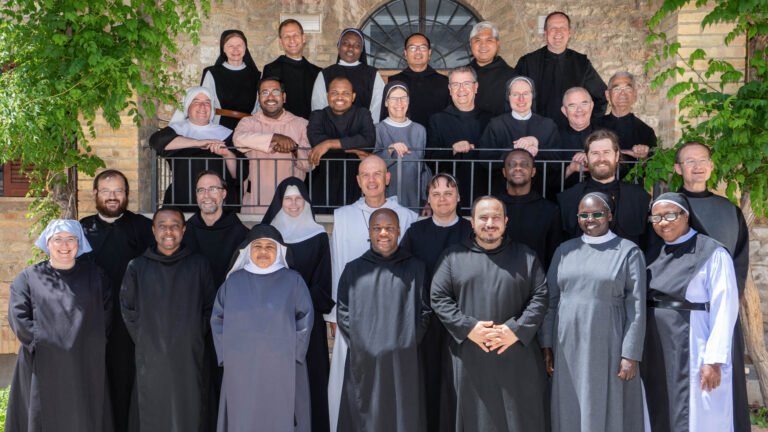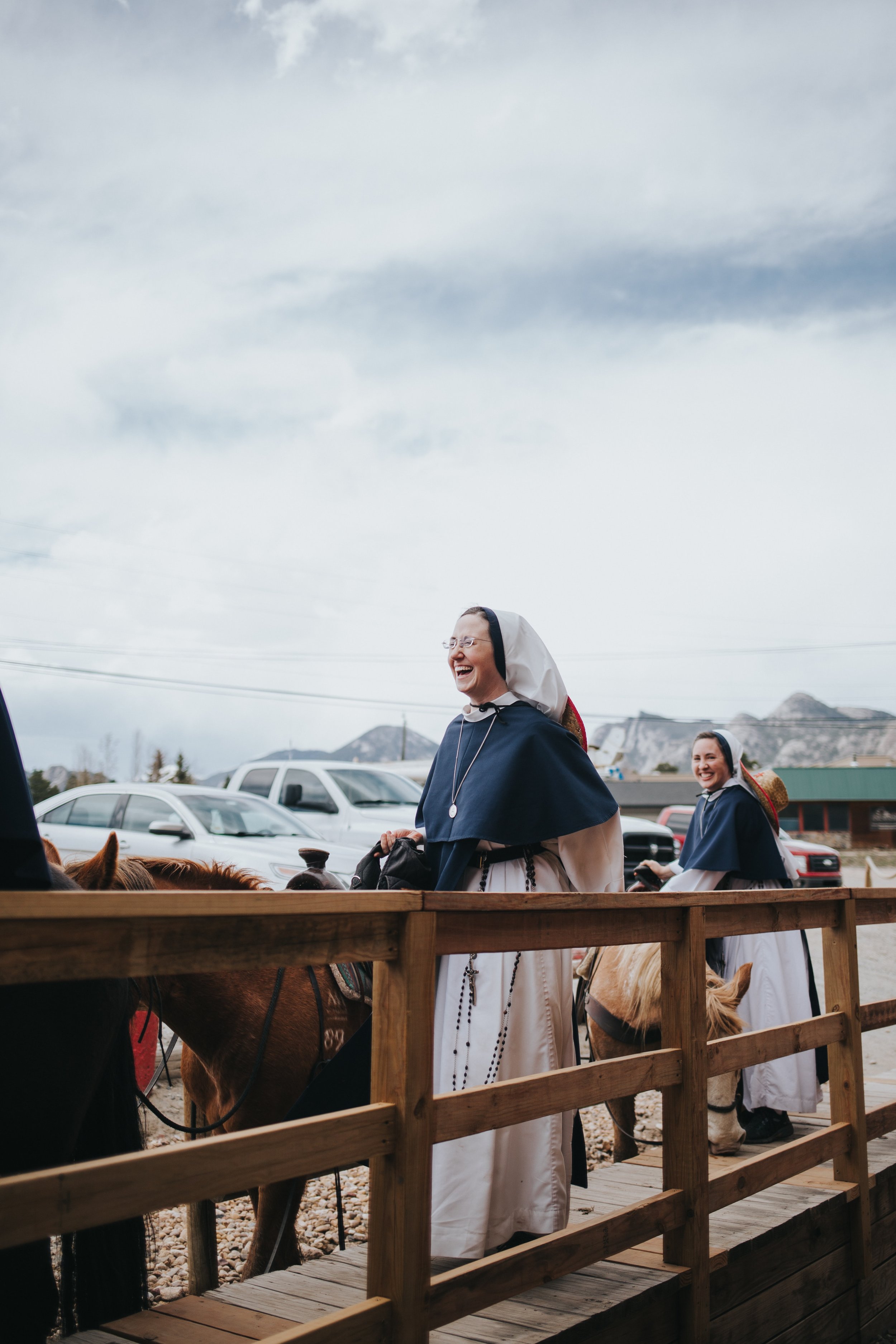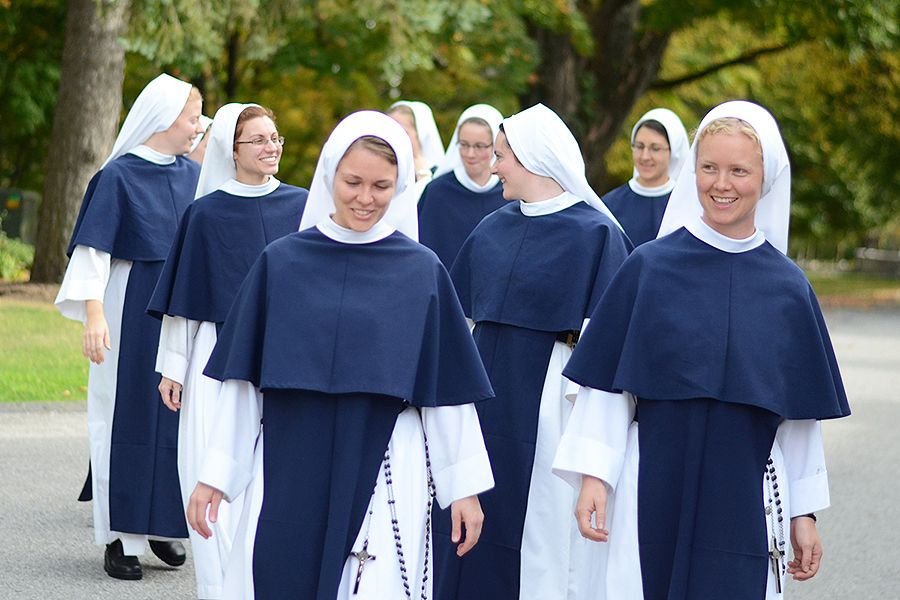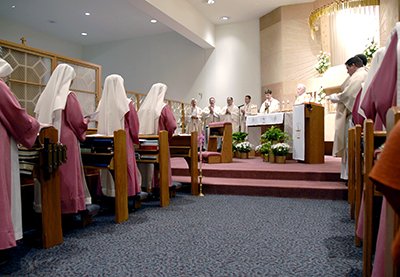Sr John Marion of Kearney NE on the day of her Solemn Perpetual Profession for the School Sisters of Christ the King.
Thank you for your generosity in considering whether God might be calling you to live a consecrated life. First of all, what is a consecrated life? Someone who is consecrated to a particular understanding of the Christian journey or gift (charism) in service of others. Consecrated life can include religious life (in communities), as well as single life as consecrated virgins, hermits, or members of secular institutes, all of whom are set apart for God.
“The state of consecrated life is thus one way of experiencing a “more intimate” consecration, rooted in Baptism and dedicated totally to God. In the consecrated life, Christ’s faithful, moved by the Holy Spirit, propose to follow Christ more nearly, to give themselves to God who is loved above all and, pursuing the perfection of charity in the service of the Kingdom, to signify and proclaim in the Church the glory of the world to come”
- Catechism of the Catholic Church p916
Types of Consecrated Religious Life
Active Orders:
Active orders, on the other hand, carry out their mission in the world. Each order is dedicated to a particular apostolate, such as teaching, missionary work, preaching, and caring for the sick, the poor, or the neglected. However, prayer is still a priority in active orders, and specific times are set aside for being with God.
Cloistered Orders:
The cloistered orders emphasize prayer and separation from the world, and, depending on how strict an enclosure is observed, cloistered monks and nuns do not generally leave the monastery. Their lives are dedicated to prayer and penance; they also work around the monastery and often make things to sell in support the monastery.Contemplative or Monastic Orders:
The contemplative dedicates much time to prayer each day, lives mostly in silence and also is dedicated to manual labor. There is a great tradition in the Church of both female and male monastic and contemplative life. Their hidden prayer and sacrifice is of major importance for the overall good of the Church.Consecrated Virgins:
From the beginnings of the Church there have been those who felt the call to consecrate themselves exclusively to Christ in a private manner. In recent times there has been a revival of this vocation, by which a woman makes her private consecration in the presence of her bishop.
SISTERS, NUNS, MONKS AND BROTHERS
Those who are in the religious state of life accepts the invitation to consecrate themselves to a particular way of living through what the Church calls “Evangelical Counsels”. They are Poverty, Chastity and Obedience in the service of God, the Church and the world.
Men and women dedicate their lives to serve in various religious orders, congregations or movements, each with their own spirituality and charism. Depending on their vocation, they do this as priests, brothers, sisters, monks, or nuns. The difference between a brother and a monk or a sister and a nun is that monks and nuns typically belong to enclosed orders of contemplatives. In contrast, religious brothers and sisters usually belong to active religious orders and congregations. Contemplatives commit themselves to a life of prayer for the world and the Church. Active or apostolic religious also commit themselves to a life of prayer but in the context of serving others in the world through education, healthcare and an increasing number of other ways in response to the world’s needs. However they live out their charism, they bring Christ to those they minister to.
LIVING AS A RELIGIOUS
While life differs for each consecrated brother and sister, the religious lifestyle can be best summed up in three vows: chastity, poverty and obedience.
The vow of chastity is the promise to love God and the people of God through the service of one’s life. It is the joyous affirmation of someone who knows how to live a self-giving life without thinking about what they can get in return. All the baptised are called to chastity in keeping with their particular state of life. In the case of a consecrated person, who remains celibate, this vow enables them to give themselves to God alone with an undivided heart and to have loving relationships with others that are not exclusive.
The vow of poverty is about living simply. Consecrated men and women have few possessions, and what they do have, they share in common with their community. In living out this vow, men and women in religious life simply want to detach themselves from possessing or being possessed by anything. It isn’t about having no possessions at all, but rather using what is needed and seeing them as gifts to build the kingdom of God.
The vow of obedience is a profound “yes”: to God, to the people of God, to a religious community and to a specific way of life. This “yes” allows the consecrated person to follow God’s call wherever and whatever it may lead them to. The vow of obedience invites the individual to direct their life towards prayer and trust in the Lord. It is far from being led blindly but instead allows the person to see how they can best serve with an open heart. They enter into an ongoing transformation as a disciple and recognise that their vocational call is never given for themselves alone but for the good of the whole Church.



